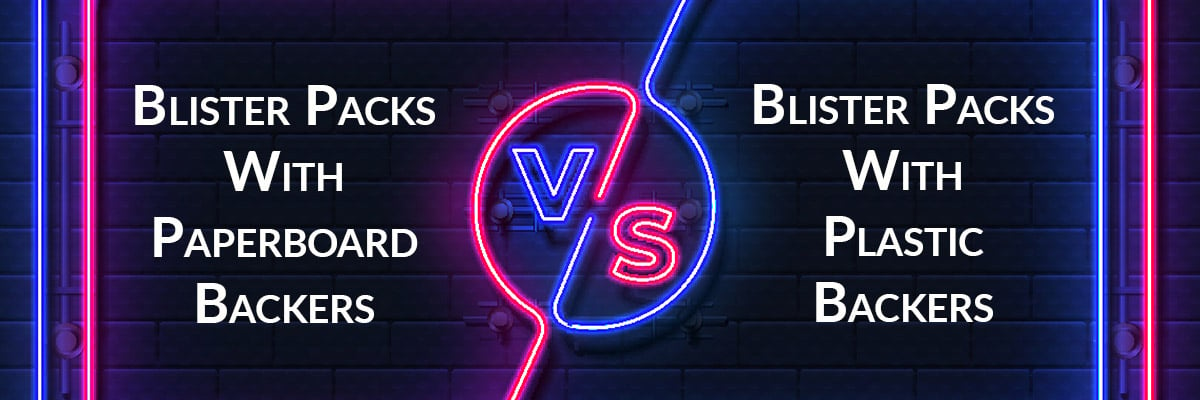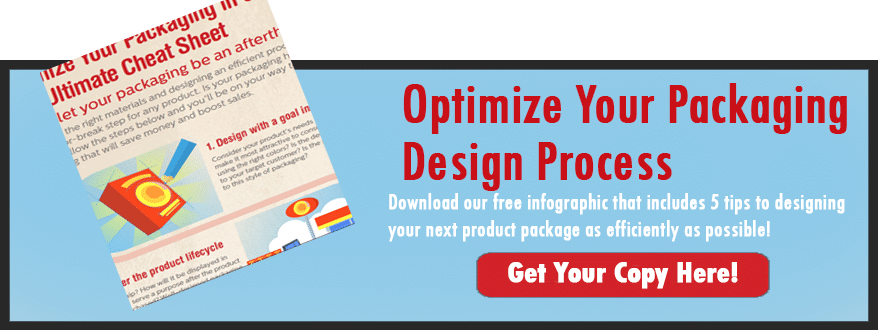Blister Packs: Paperboard Backers VS Plastic Backers
Perhaps you have been packaging your products in blister packs for many years and are looking to see if there are any new updates to blister packaging technology. Or, maybe you are a start-up looking to package your first-ever product in blister packs and are curious about this type of packaging and its related items.
Generally speaking, there are two types of blister packs. Those that have a paperboard backer and those that have a plastic backer. When thinking about using blister packs to package your products, you will generally have to choose between one of these two options.
But which backer is better for you? Does one work better than the other? Which one is better for the environment? Does it really make a difference which one you choose?
These are just a few of the questions you likely have running through your head while you are pondering packaging your products with blister packs.
Industrial Packaging has helped countless clients implement carded packaging solutions such as blister packs for many different types of applications. Through our many years of experience with the different kinds of blister packs available, we will be able to help you choose the one that is right for your products.
In this article, we will explore the differences between blister packs and the materials commonly used to create the backers for this type of packaging material. We will also assist you in choosing the appropriate blister pack backers for your unique packaging needs.
What Is A Blister Pack?
Blister packaging (also known as blister packs) is a type of carded packaging. These little containers feature pre-formed plastic casings with a backer commonly made from either blister board (a type of paperboard) or plastic.
As mentioned earlier, blister packs are a type of tamper-evident packaging. To open a blister pack, you either have to remove the entire backer or smaller portions of the back to expose and remove the products contained within the blister pack.
If a blister pack has been tampered with, you will see holes or other protrusions in the backer or the blister itself. These alert your consumers to tampering.
Products commonly packaged in blister packs include batteries, pharmaceuticals, candy dispensers, glue sticks, toothbrushes, and other small consumer goods.
Need Help Designing Your Packaging?
Blister Packs With Paperboard Backers
Blister packs, which are packaged with a paperboard backer, are commonly used for the applications mentioned above. The paperboard (or blister board as it is commonly called) is usually branded with graphics and text including product descriptions, pricing, features, safety instructions, and other types of relevant information.
Blister packs that use blister boards as the backers are useful to print the required information on the backer without having to put a label on the item. This is good for environmentally-minded folks as labels are often hard or impossible to remove from the blister pack making recycling equally complicated or impossible.
Most of the time, the backer can be easily separated from the plastic blister and both materials can be recycled easily. However, if either the blister or the backer has a label applied, it can be difficult to separate the materials, and complications in recycling may result.
Blister Packs With Plastic Backers
Blister packs with backers made of plastic are used for similar applications to those of ones featuring a blister board backer. The main difference with blister packs using plastic backers is that they often will require labels. These labels, as mentioned earlier, have information pertaining to the products within and again, this can make it hard to recycle these items.
When empty blister packs are thrown into a single stream recycling bin, they will likely be thrown away. If the blister packs have not had the labels removed, they will be considered contaminated and will end up not getting recycled.
Some plastic-backed blister packs will actually feature a blister board insert between the two pieces of plastic which result in a kind of hybrid between the two types of blister packs we are discussing today.
Which Type Of Blister Pack Backer Is Right For You?
To answer this question, you will need to answer some other questions in order to figure out which of these two blister packs is the right choice for your product.
- Is environmental impact important to you? If you answered yes, then blister packs with paperboard backers are your best bet. Blister packs with paperboard backers such as the ECOSLIDE - OTC (a type of blister pack used for pharmaceuticals) uses less material, less plastic and the paperboard and plastic can be easily separated for recycling.
- Are you trying to reduce your use of plastics? Many consumers are avidly turning against plastics and demanding that brands reduce their dependence on them. By using paperboard backed blister packs, you can help reduce the amount of plastic in the world.
- Would you like to avoid using labels? Using labels requires additional machinery and materials and can complicate the recycling process. Using blister packs with paperboard backers may allow you to negate the need for labels.
- Do you need sturdy packaging? Suppose you are packaging tools, heavier items, or products with sharp edges. In that case, you will want to consider using a blister pack that is made entirely out of plastic, which will ensure greater protection for the buyer. If you want the aesthetic of a paperboard backer, you can request a plastic-backed blister pack with a paperboard insert (known as a trapped blister pack) for graphic and branding capabilities.
Where To Buy Blister Packs
Regardless of which type of blister pack you choose for your unique packaging requirements, you have to buy them from somewhere. Your choices come down to buying directly from the manufacturer or using a distributor.
Manufacturers only sell their brand of blister packs while distributors usually offer multiple brands and will help you choose one based on your actual needs.
However, as distributors do not make the materials themselves, manufacturers usually have more in-depth information about the products. That being said, some manufacturers will not sell directly to consumers, in which case, you will have to use a different outlet.
If you are not sure where to start your search for the appropriate type of blister packaging for your business, you may want to speak to one of our packaging specialists. They will be able to help you choose the right blister pack and vendor, even if you do not ultimately buy from us.
About Nathan Dube
As the Digital Marketing Specialist at Industrial Packaging, I am honored to create content for such a phenomenal company and work with one of the greatest teams in the Packaging Industry. Whether creating a video, writing blog posts or generating other pieces of content and multimedia, I am always excited to help educate and inspire our prospects and clients to reach their highest potential in regards to their packaging processes and needs.




